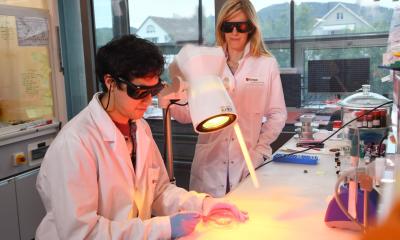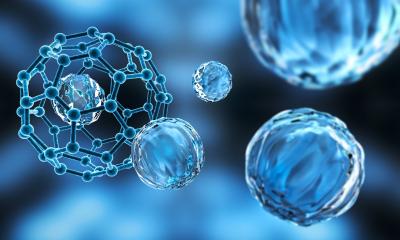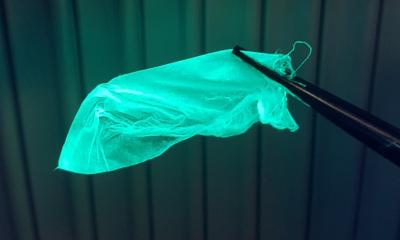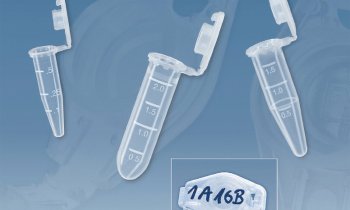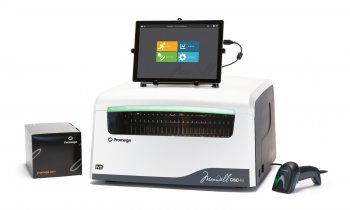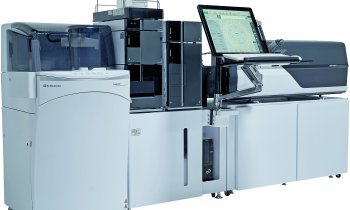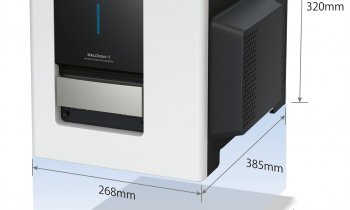News • Nozzle-free electrospinning
Synthetic skin could aid wound healing
Engineers at the University of Edinburgh have devised a fabric dressing whose thickness and elasticity can be custom-matched to specific areas of the body.
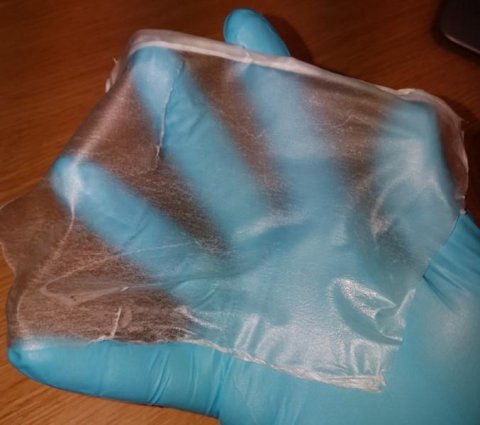
Credit: Antonios Keirouz
The material is able to be absorbed by the skin’s own tissue as it heals. Two synthetic materials are blended to produce nanometre-sized fibres – thousands of times thinner than a hair – which can be fabricated in minutes. Edinburgh researchers produced their custom fabric using a recently developed method, known as nozzle-free electrospinning. Their device comprises a rotating cylinder above a pool of solution containing the two components of the fabric. As the cylinder spins under high voltage and temperature, tiny fibres are quickly produced from the liquid and spun onto an adjacent hot surface. As the fibres cool, the fabric is formed.
The component mixture can be altered to produce dressings of varied thicknesses and elasticity. It incorporates a recently discovered material, known as polyglycerol sebacate, which is stretchy and compatible with human tissue. Tests with skin cells showed that the material’s small scale fibres provide a scaffold on which newly formed skin can grow.
Recommended article
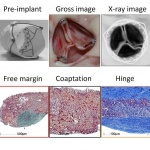
Article • Electrospinning
Renewing the promise of bioabsorbable implants
Electrospun materials bring a spark of hope to a cardiovascular landscape darkened by setbacks for reabsorbable stents. It was famously said that implanting a device in a person to cure a disease is to implant a new disease. Simply put, the human body will continually fight against foreign materials, leading to chronic inflammations or repeated interventions.
Research will now focus on further developing and testing the material for medical use, which the team expects may take about four years. The study was published in Medical Engineering & Physics. "Our technique is a cost-effective way of making artificial skin adapted for all areas of body, to accelerate the wound healing process", says Dr Norbert Radacsi from the University's School of Engineering. His colleague, Antonios Keirouz, adds: "Dressings made from this new fabric would be absorbed by the body, reducing the need for frequent changes."
Source: University of Edinburgh
01.07.2019



